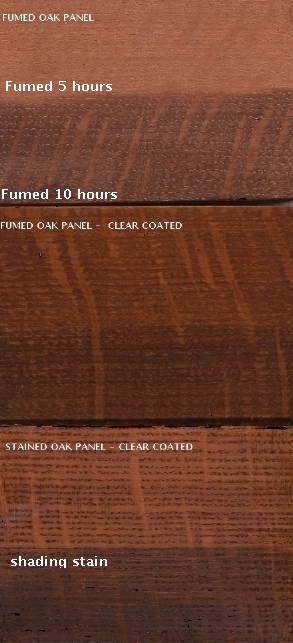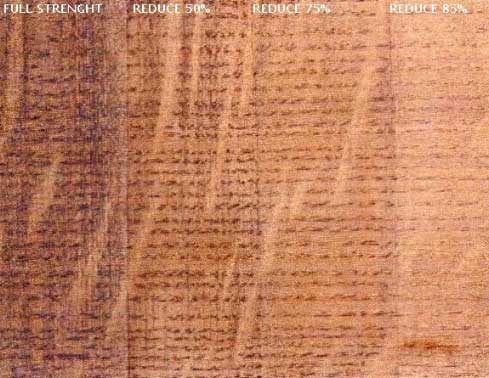Matching the "Stickley" Look on White Oak
Trying to accentuate the rays in stained oak? Fuming for different times or tweaking stain strengths can help fine-tune the piece's finished appearance. August 30, 2005
Question
I'm trying to match the Stickley finish on quartersawn white oak. Several attempts have been successful for color but are not accentuating the figured rays. The rays should not take the color as much as the rest of the wood, and they should remain lighter as the background darkens. Does anyone have any suggestions?
Forum Responses
(Finishing Forum)
From contributor B:
Several issues ago, I am not sure exactly which one; Fine Woodworking had a pretty good article on doing just what you are trying to achieve. I am not sure if I recall exactly, but I believe they used a relatively light brown analine dye first, and then sealed the wood. After sealing, the grain was filled with a burnt sienna gel stain or pigmented filler. In any case, the process used came relatively close to the original fumed colors. I'd check out the article in Fine Woodworking.
From contributor R:
If you want it to be Stickley, I would suggest that you ammonia fume it like they did then. It's not that difficult, and I believe if you do a search this topic has been dissected before.
From contributor M:
I recently did an article on "To Fume, Or Not To Fume." It tells a little about Ammonia fuming, but its actually about staining the woods to look like they were fumed. I used a process I call stain reduction.
I used a VDB and a little black colorant and made up a stain. I then made up a sample board, and I then kept reducing the stain several times on the board going from dark to lighter. I then clear coated the panel, and I then selected the color I wanted to use to match a fumed sample I used as my guide.
It certainly was worth the time to make up the stain reduction panel, there are other colors you can use depending on what you want. You can then use a shading stain to kick the colors over to whatever final color you want.
Actually Mr. Stickley did this to, because all oak woods don't fume perfectly, so he would doctor up those woods.
From contributor M:
The top panel shows the amount of time this panel was left in the ammonia tent. The middle panel shows the top panel with clear coats, note the color change. The bottom panel shows the panel first stained, and then a shading stain was added, and then it was clear coated.

From contributor D:
To the original questioner: I have done this for a customer that supplies white oak stained chairs for Stickley. I had them spray a 20 parts thinner to 1 part sealer before staining. The customer has been using this method for almost two years.
From contributor M:
This is a stain reduction panel, and it can help you match colors by showing you what the different reductions of stains will look like after you have clear coated the sample board. Manufacturers use this same technique to produce several colors from one stain. In some cases you may have the right color and not know it, because the color strength is the problem. Once you reduce the stain you may be right on target.

Click here for full size image

